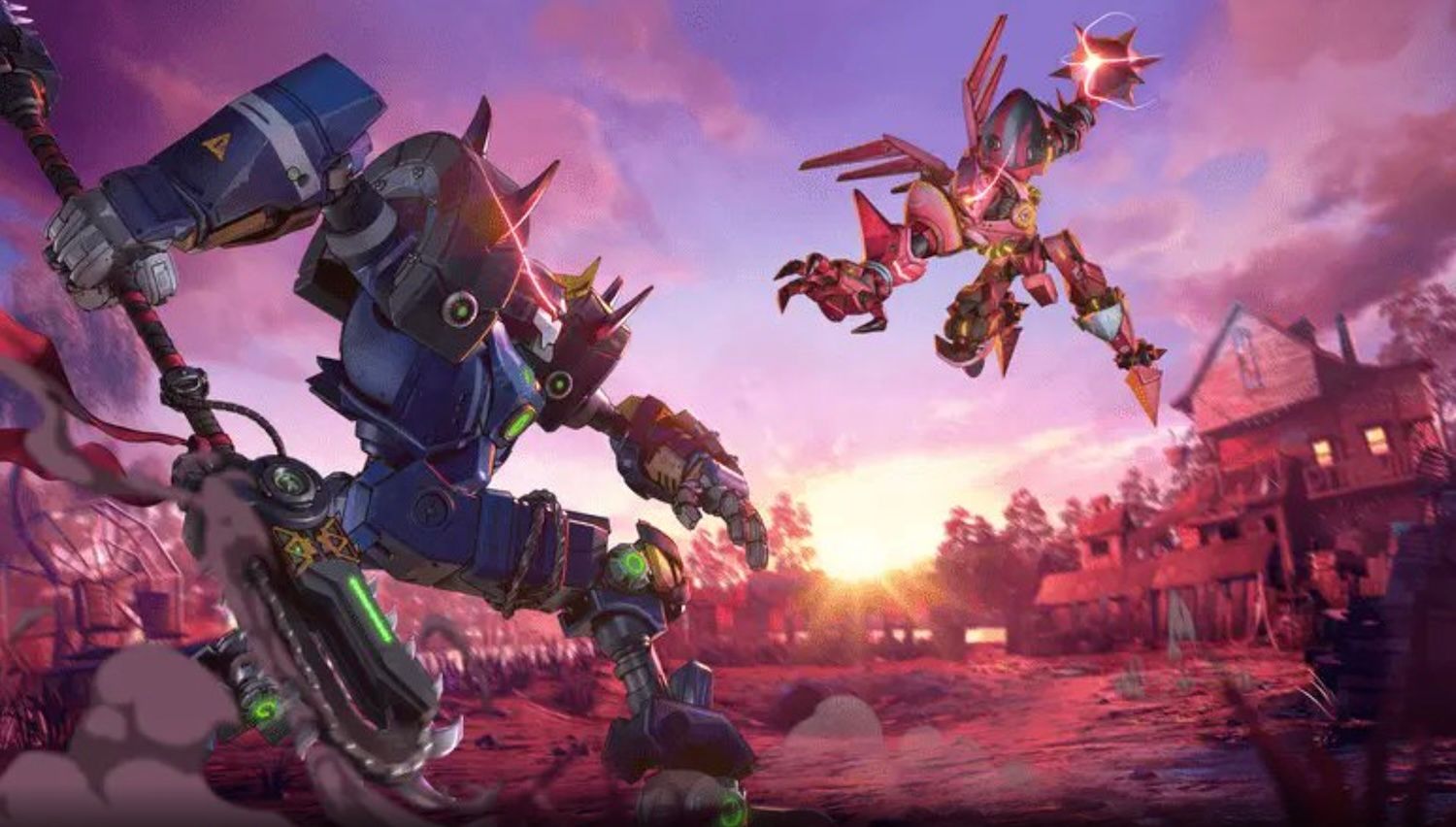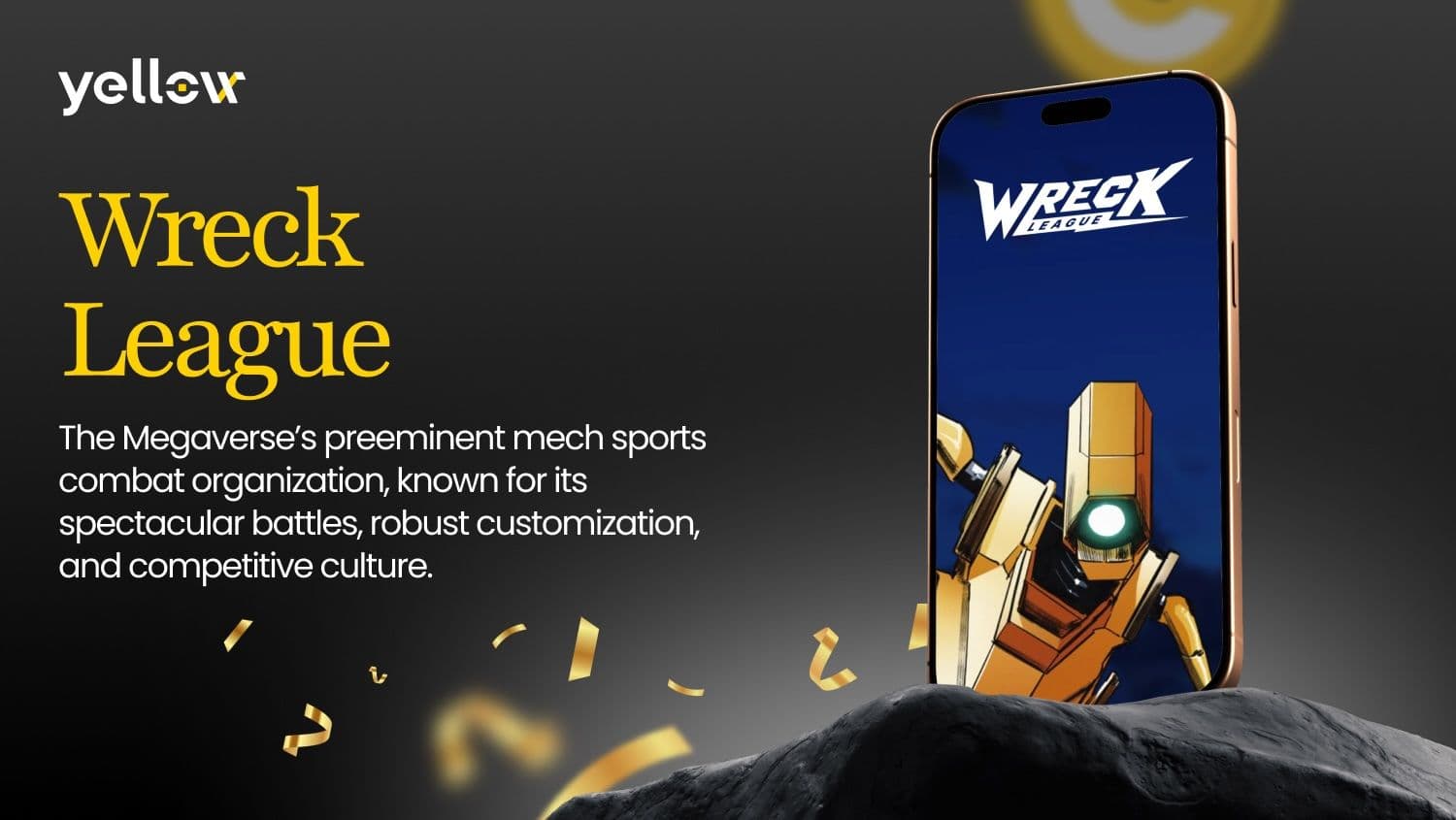Wreck League Versus, a mechanized combat game built on Base blockchain, has won a hackathon recognition from Yellow Network after integrating the Yellow SDK to solve cross-chain liquidity fragmentation for its 2,300 players during a two-week campaign. The game, developed by Tower Token and led by adJAstra, uses the SDK's chain-agnostic infrastructure to consolidate player funds across multiple blockchains—including Polygon, BNB Chain, Base, Ethereum, and TON—eliminating the need for costly bridging transactions while enabling unified in-game purchases. Yellow announced the win on X, describing it as "exactly the kind of builder energy we love to see pushing new rails with Yellow SDK."
What to Know:
-
Wreck League Versus integrates Yellow SDK to unify player liquidity across five blockchains, eliminating gas-heavy bridging and enabling seamless in-game transactions from any chain balance
-
The game attracted 2,300 participants in two weeks, combining real-time mech combat with NFT-based customization where 10 parts create one battle-ready mech
-
Yellow SDK provides chain-agnostic development tools that abstract blockchain complexity, allowing developers to build Web3 applications with Web2 development simplicity while maintaining decentralized benefits
Yellow SDK: The Infrastructure Behind Cross-Chain Gaming
The Yellow SDK operates as a high-performance development toolkit designed to bridge Web2 and Web3 by abstracting technical blockchain complexity. It provides multi-chain compatibility out of the box and enables off-chain execution for real-time interactions—addressing transaction latency that typically plagues blockchain gaming. The SDK allows developers to build once and deploy across different blockchain networks without chain-specific implementations, focusing on product innovation rather than infrastructure management.
For Wreck League, this infrastructure solved critical problems.
"With Yellow, we can consolidate liquidity across multiple chains in user's wallet," the developers stated. "They don't have to bridge and waste gas because of that. They can then use whatever balance they have to purchase in-game."
The alternative would have left players struggling with fractured liquidity pools. Without the SDK integration, players could only perform transactions within separate blockchain ecosystems—unable to consolidate assets or execute cross-chain purchases. The Yellow solution delivered unified balance management and fast transaction processing within the game environment.

Combat Mechanics and Real-Time Battles
Wreck League positions itself as the Megaverse's premier mech sports combat organization, featuring nearly indestructible mechs forged through proprietary processes.
The governing body, B.R.A.W.L (Brand and Regulations Administration of Wreck League), controls team admittance, IP approval, sponsorships, and parts manufacturing. Constructors—entities that design or own rights to labels, logos, and distinguishing marks—contribute specialized branding and parts to official mechs, with examples including PRIME-8 and Psycrane.
Matches operate as one-versus-one real-time battles where players pilot custom mechs in head-to-head combat. Each match consists of one round, requiring players to win one round to claim victory.
The game features cross-play functionality spanning mobile, PC, and Mac platforms.
Strategic depth emerges through action card deployment systems. Players unleash moves by deploying loadout cards that manifest randomly during battle, with each action consuming different energy amounts. Timing these deployments correctly can trigger devastating combo attacks. Special and ultimate attacks demand precise meter management, while defensive tactics include timed blocks and BURST—a powerful counter that disrupts opponent attacks but remains limited to one deployment per match.
NFT-Based Mech Construction
All mechs in Wreck League are user-generated, with nearly limitless combination possibilities. Players create mechs by selecting and assembling 10 NFT parts into one mech NFT.
Each part carries individual stats and skills that determine combat performance.
The system allows for complete customization—mechs can be disassembled to return the 10 parts, enabling players to swap components and rebuild fighters entirely.
This design philosophy ensures aesthetic expression matches tactical prowess.
Players showcase both their strategic thinking and visual creativity on the battlefield, building diverse rosters to excel in ongoing tournaments and events offering significant on-chain prizes.
Constructing comprehensive mech armies also grants access to rewards in future mints and exclusive tournament entry.
From its origins on a distant junk moon to its current status as the pinnacle of mechanized sporting events, Wreck League has evolved into an unrivaled battleground. Teams receive permission and encouragement to customize assembled mech appearances while adhering to B.R.A.W.L regulations.
Closing Thoughts
Wreck League Versus demonstrates how blockchain infrastructure tools can eliminate technical barriers in competitive gaming through Yellow SDK integration, consolidating multi-chain liquidity for thousands of players. The game combines strategic real-time combat with NFT-based mech customization, offering cross-platform play and competitive tournaments with on-chain rewards. Its hackathon recognition from Yellow highlights the growing sophistication of Web3 gaming applications that prioritize user experience without compromising blockchain benefits.

